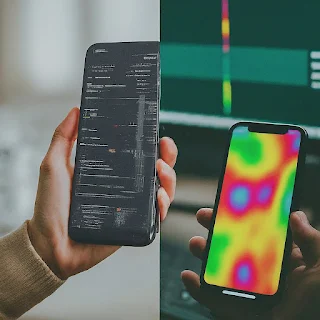In the age of automation, manual software testing might seem like a relic of the past. However, when it comes to crafting a seamless user experience (UX), manual testing remains an invaluable tool. Testers, acting as real users, can identify usability issues that automation might miss.
Why Manual Testing for UX Matters:
- Human Intuition: Manual testers can instinctively navigate an interface, identifying confusing layouts or unintuitive workflows that automation scripts might struggle with.
- Emotional Response: Users have emotional responses to software interactions. A manual tester can assess if the overall experience feels frustrating, confusing, or even delightful, something automation can't replicate.
- Edge Cases: Real-world user behavior can be unpredictable. Manual testers can explore unexpected scenarios and workflows that automation might not anticipate, uncovering hidden usability issues.
Essential Manual Testing Techniques for UX:
- Scenario-Based Testing: Develop test cases based on typical user journeys—from login to purchase for e-commerce, or from search to booking for a travel website.
- Heuristic Evaluation: Evaluate the software against established usability principles like consistency, information architecture, and user control.
- Exploratory Testing: Encourage testers to freely explore the software, mimicking a real user's curiosity and discovery process.
- Think Aloud Testing: Ask testers to verbalize their thoughts and feelings while interacting with the software. This can reveal areas of confusion or frustration.
- Accessibility Testing: Ensure the software is accessible to users with disabilities, using tools like screen readers for visually impaired users.
Benefits of Manual Testing for UX:
- Reduced User Frustration: By identifying and addressing usability issues early, you minimize user frustration and abandonment rates.
- Increased User Satisfaction: A smooth and intuitive UX keeps users engaged and coming back for more.
- Improved User Adoption: Usable software is more likely to be adopted and integrated into users' workflows seamlessly.
- Competitive Advantage: A superior UX sets your software apart from competitors, enhancing brand reputation and driving user loyalty.
The Human-Machine Partnership:
Manual testing excels at uncovering UX issues, while automation streamlines repetitive tasks like regression testing. The two approaches work best in tandem. Manual testing identifies usability problems, and automation ensures those issues are consistently addressed in future builds.
The Importance of User Experience in Software Testing
User experience encompasses the overall interaction that users have with a software application or system. It encompasses elements such as usability, accessibility, responsiveness, and intuitiveness, all of which significantly impact user satisfaction and adoption. Unlike automated tests that focus on functional correctness and performance metrics, manual testing allows testers to simulate real-world user scenarios, uncover UI/UX issues, and assess the software's ease of use from an end-user perspective.
Key Manual Testing Techniques for Optimizing User Experience
Exploratory Testing: This technique involves exploring the software application freely, without predefined test cases. Testers intuitively interact with the application to uncover usability issues, inconsistencies in UI elements, and unexpected behaviors. Exploratory testing mimics real user interactions, making it effective in identifying usability challenges that automated tests may overlook.
Usability Testing: Usability testing focuses explicitly on evaluating how intuitive and user-friendly the software interface is. Testers, often representing target users, perform tasks within the application while providing feedback on navigation, clarity of instructions, layout, and overall user experience. This iterative process helps refine the UI design and enhance usability before the software reaches end users.
User Interface (UI) Testing: UI testing involves verifying the visual elements and layout of the software interface to ensure consistency, adherence to design guidelines, and compatibility across different devices and screen resolutions. Testers check for alignment, color schemes, fonts, button sizes, and overall aesthetics to maintain a cohesive and appealing UI that enhances user engagement.
Accessibility Testing: Ensuring software accessibility is essential for accommodating users with disabilities. Manual accessibility testing involves evaluating the application against accessibility standards (e.g., WCAG guidelines), testing screen readers, keyboard navigation, contrast ratios, and alternative text for images. Testers ensure that all users, regardless of abilities, can interact with the software effectively.
Cross-Browser and Cross-Device Testing: Given the diversity of devices and browsers used by end users, manual testing across different platforms is crucial. Testers verify that the software functions correctly and displays consistently across various browsers (e.g., Chrome, Firefox, Safari) and devices (e.g., desktops, tablets, smartphones). They identify layout discrepancies, responsiveness issues, and usability challenges specific to each platform.
Integrating Manual Testing into the Software Development Lifecycle
To maximize the benefits of manual testing for user experience, it should be integrated strategically throughout the software development lifecycle:
- Early Stage Reviews: Conduct exploratory and usability testing during the design and prototyping phases to identify potential UX issues early on and refine the user interface iteratively.
- Iterative Testing Cycles: Incorporate usability testing in each iteration or sprint of Agile development to gather continuous feedback from testers and stakeholders, allowing for timely adjustments and improvements.
- Post-Release Evaluation: Perform post-release manual testing to validate the effectiveness of UI enhancements and gather user feedback to inform future updates and iterations.
Conclusion:
Prioritizing user experience is crucial for software success. By incorporating manual testing techniques into your development process, you can ensure your software is not just functional, but also intuitive, enjoyable, and ultimately, user-friendly. Remember, successful software should not only work flawlessly, but also feel like a joy to use. By harnessing the power of manual testing, you can create software that delights your users and positions yourself for long-term success.
